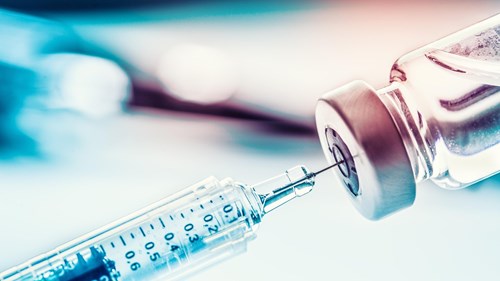For the first time, the National Academy of Medicine recommended vaccine prioritization be given to individuals who struggle with social determinants of health (SDoH).

As anticipation for a COVID-19 vaccine continues to build, health officials scramble to determine the most effective vaccine distribution plan. While vaccine distribution typically starts with health care workers, first responders, people with underlying health conditions, and older adults, the National Academy of Medicine has proposed an additional population be added to the prioritization list: individuals with social vulnerabilities.
In its report earlier this month, the National Academy of Medicine recommended COVID-19 vaccine prioritization include individuals identified through the Centers for Disease Control and Prevention (CDC) Social Vulnerability Index, which identifies SDoH such as food insecurity, housing, and access to transportation.
The recommendation, which marks the first proposal in history to prioritize individuals with social vulnerabilities, is critical as the COVID-19 pandemic continues to disproportionately impact communities of color, with Black Americans, Hispanics, and Native Americans nearly three times more likely than white populations to contract the virus. Black Americans are twice as likely to die from COVID-19, followed by Native Americans and Hispanics. The disproportionate burden on these vulnerable communities reflects the impacts of systemic racism and socioeconomic factors linked to a heightened risk of severe illness or death from COVID-19, explained report authors, noting factors such as frontline jobs that don’t allow social distancing, crowded living conditions, lack of PPE, and an inability to work from home.
“In embarking on our task, the committee started with equity. Inequity has been a hallmark of this pandemic, both locally and globally. Inequities in health have always existed, but at this moment there is an awakening to the power of racism, poverty, and bias in amplifying the health and economic pain and hardship imposed by this pandemic,” said the committee of authors. “Thus, we saw our work as one way to address these wrong and do our part to work toward a new commitment to promoting health equity that is informed by but lives beyond this moment.”
In the report, the committee also recommended the COVID-19 vaccine be distributed in four phases:
- Health care workers, first responders, people with underlying health conditions that put them at a significantly higher risk, older adults who live in group settings, and people with social vulnerabilities.
- Remaining older adults not included in phase one, K-12 teachers, school staff, childcare workers, people of all ages with underlying health conditions that put them at a significantly higher risk, essential workers in specific industries that do not allow social distancing, residents and staff of group homes, homeless shelters, prisons, and detention centers.
- Children, young adults, and other critical workers not included in the previous phases.
- Everyone residing in the U.S. who did not have access in the previous phases.
Other recommendations made in the report include:
- Leverage and expand existing systems and partnerships across all levels of government and provide necessary resources for equitable vaccine allocation
- Administer the vaccine with no out-of-pocket costs
- Create and fund a vaccine risk communication and community engagement program
- Launch a vaccine promotion campaign
- Develop an evidence base for effective strategies for vaccine promotion
- Support equitable allocation of the vaccine globally
The report will be reviewed by the Advisory Committee on Immunization Processes, a committee within the CDC that provides recommendations on control of vaccine-preventable diseases.

